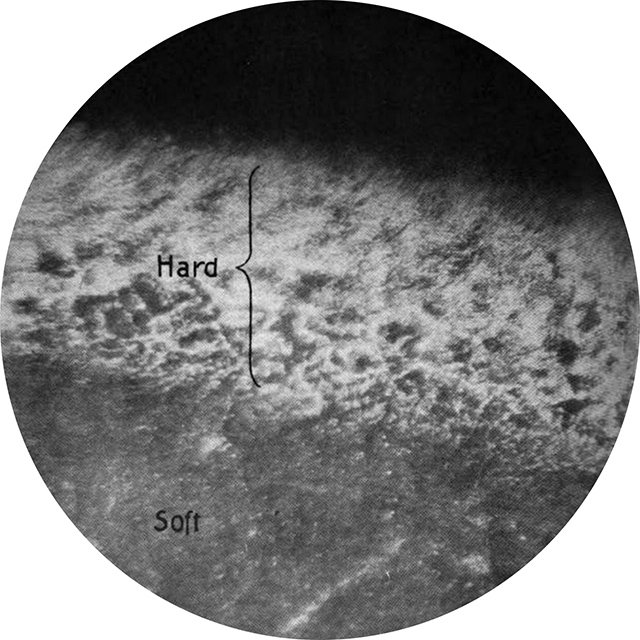the perfect mobility of a liquid

*
Photograph No. 8, Section E. Etched. x100
(cropped for cleaner round; levels 20 1.00 255)
illustrating “Metallographic Examinations / Tests of trepanned rings from 12-inch gun” in Report of the tests of metals and other materials made with the United States Testing Machine at Watertown Arsenal, Massachusetts, during the Fiscal year ended June 30, 1913 (1913)
Harvard copy, digitized October 1, 2007
same copy and scan at archive.org
That the hard layer has a distinct structure of its own is shown in photograph No. 8, taken from section E. Attempts were made to cut out portions of the hard layer for chemical analysis, but the efforts were unsuccessful. The metal was too hard to be taken from the rifled surface and the layer too thin to be taken from the rear.
According to Beilby [in “The hard and soft states of metals” *], a surface skin may be built up by mechanical movement, which gives unmistakable evidence that the surface must have passed through a state in which it must have possessed the perfect mobility of a liquid. This surface possesses distinctive properties which differentiate it from the substance beneath it. Hardening thus results from the formation at all the internal surfaces of slip or shear of mobile layers similar to those produced on the surface by mechanical movement. These layers only retain their mobility for a brief period, and then solidify in a vitreous, amorphous state...
tags:
clouds; hardness; softness; metallurgy; rounds; sky; Watertown Arsenal
G. T. Beilby